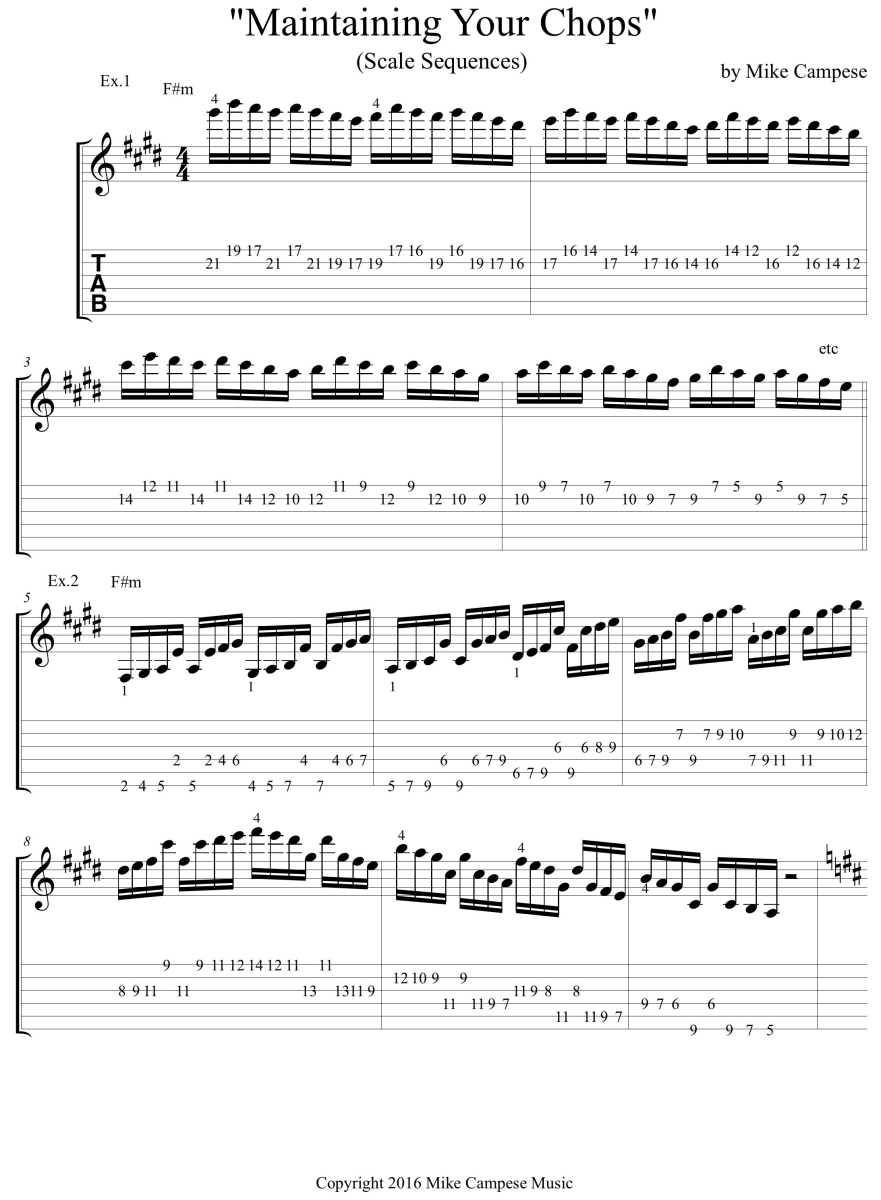Once you develop your technique and you reach a high level of playing, you have to maintain it or you will lose it. In this lesson I will be showing you some exercises to help maintain your chops, focusing on scale sequences. There are many sequences you can do and instead of giving you some common ones, I created some sequences by thinking a little more creatively. You should know the basic sequences as well and you should make up your own.
It is important to play all of the exercises I give you in different keys and all across the fretboard. It is also a great idea to play these exercises with a metronome to make sure you are playing as even as possible and don't worry about the speed until you have them very clean. It is OK to push yourself a little as well by turning up the metronome to where it is hard to play and then back down to where it is clean. This will help you to play faster. Again, speed is not important right now, playing accurate is. These exercises are good for all levels and even if you are an advanced player, these exercises will help maintain your chops.
The first sequence in Example 1 is based on the F# Dorian scale (F#, G#, A, B, C#, D#, E) and is played on the top 2 strings, the E and the B. This sequence is not difficult to play, but it is really great for your picking and it sounds cool. Also, It will help develop your inside and outside picking, because it moves back between both strings, but mainly focusing on inside picking. I start with a downstroke and alternate pick the whole example and you could reverse it as well.
MP3 - Maintaining Your Chops - Example 1
Example 2 is a string skipping pattern (also in the F# Dorian mode) that moves up the neck and then back down. This one can be tricky for the right hand, because of the string skips. Be sure to take it slowly and move it to all of the other positions up and down the neck.
MP3 - Maintaining Your Chops - Example 2
Now with Example 3 we have a scale sequence that stays right inside of the A mixolydian mode (A, B, C#, D, E, F#, G). This sequence is built from the pattern (1, 2, 3, 5, 4, 3, 2, 1), the numbers listed here are the scale steps of the scale and this pattern
moves up the neck off of each note of the A mixolydian mode.
MP3 - Maintaining Your Chops - Example 3


OK, that is it for now! Be sure to make up your own sequences, and don't forget to check out my latest CD, "Chameleon". For more info, visit mikecampese.com.
Mike Campese is an all-around music performer, session artist and teacher competent in many musical styles, electric and acoustic. He has studied at G.I.T. (Honors Graduate), and with Paul Gilbert, Norman Brown, Stanley Jordan, Scott Henderson and Keith Wyatt.